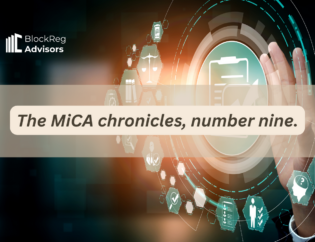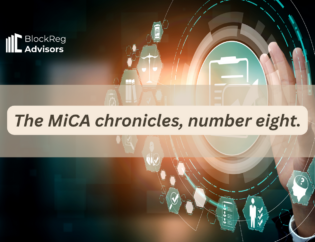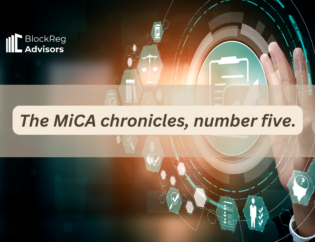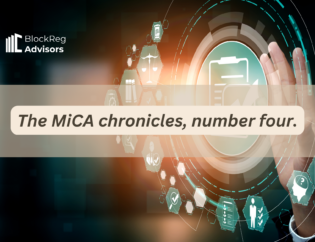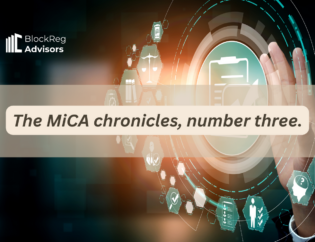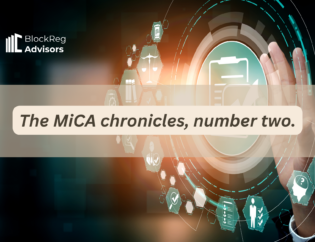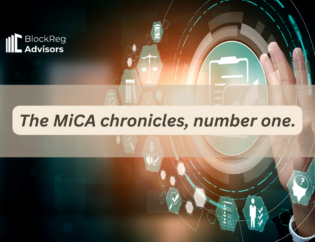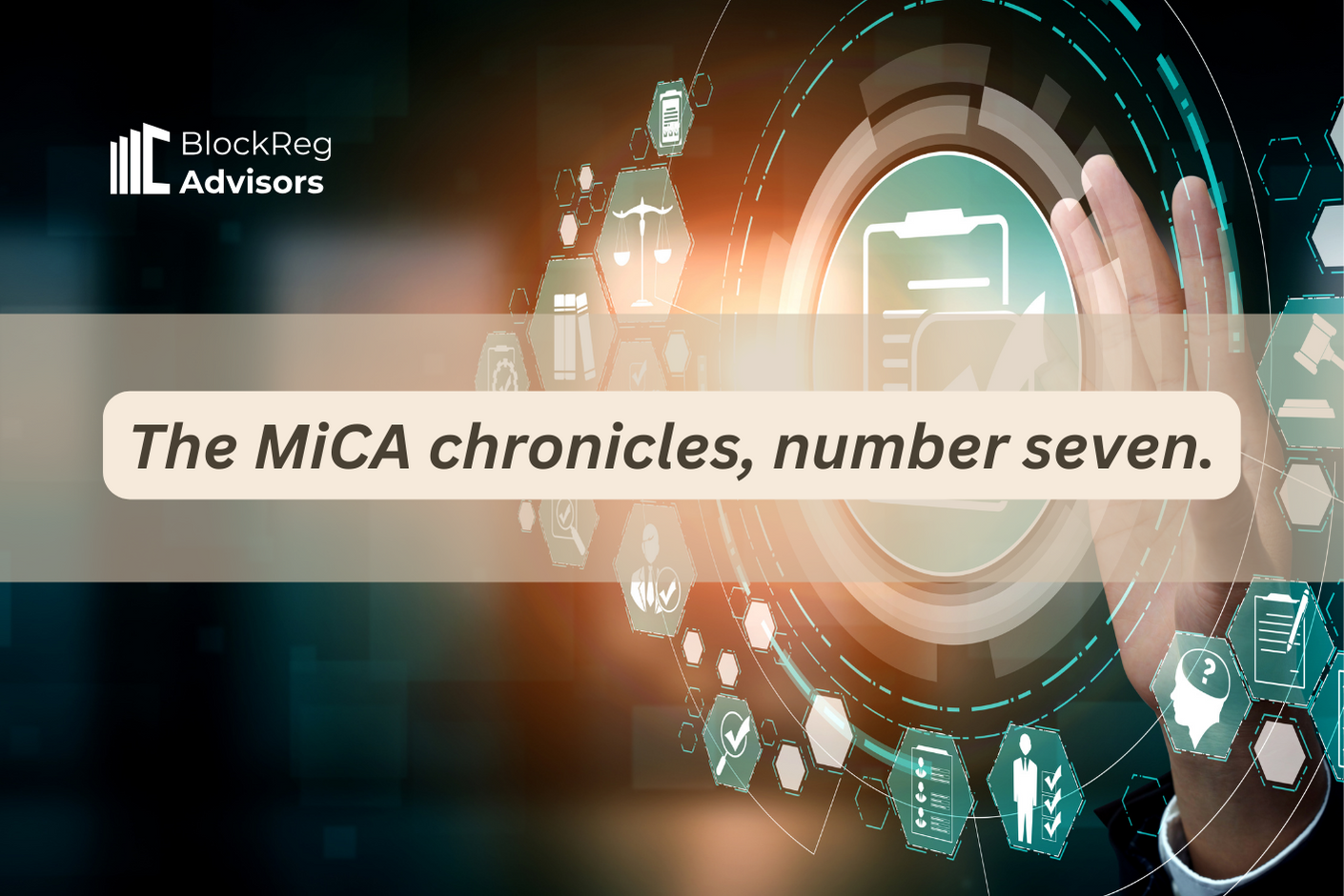

Regulation of crypto-assets in the EU: song two
New year, new song: a time for new challenges, new questions, and to attempt for the hundredth time a clean slate and leave all that happened badly behind. But can we truly let go of the past, particularly when it was so intense?
Intense is a strong word, but I think it nicely sums up the past year of 2023 when considering the degree of EU policymaking for FinTechs in general. There was always something coming. There were proposals for enacting a digital euro, a new payments legal framework (with a very interesting regulation on financial data portability), while significant agreements were done in the AI and Data Act regulation. Discussions for the new AML framework continued, discussions about how to implement DORA continued… It seemed that the EU was trying really hard to take care of significant aspects related to finance and technology before this years’ elections.
Oh, yes, and I was almost forgetting that MiCA was enacted too. Good old MiCA. Remember it? It was a thing, right? At a certain point in time… Now it just seems like old news, come to think of it. Was it May, June that the long-awaited regulation on the market in crypto-assets was enacted? It seems a lifetime, almost – and the funny thing is that we are still five months away from it to enter into force, and only partially. This is the seventh MiCA chronicle, and hopefully I will double the number before MiCA is out there.
Waiting is terrible – Tom Petty was completely right when he sang that it was “the hardest part”. The shadow looms over the skies, and although you want to continue your life as it is, you know that is no longer possible. You can be patient, and prudent, but there is a limit. Why so much time? Why not just implement the thing and let current and prospective businesses start dealing with its measures? Why not give a short transition period and let the party begin? Was a year (and, for crypto-asset service providers and issuers of tokens other than ARTs and EMI, a year and half) really necessary?
The ways of the EU legislator are not very mysterious. The year of vacatio legis was important for one good reason: to up a notch on the exact requirements that CASPs and issuers would have to apply. It was time to turn the volume up another level.
Confused? No need to be: think of this as a game, or a theatre play. MiCA was level one, the first act in the putting a legislative framework regulating crypto-asset businesses. But it was not the whole story, and we knew it from the very start. In more than one article there were hints, explicit and clear as the water that falls from the clouds in our European heads during this wintertime. We knew another level was coming, and that level was level two.
It isnt’ easy – but nothing is / no. And it may become more complicated. But lets go slowly, since the year just started, and a lot of work lays ahead before the effective MiCA kick-off.
A lot of important details of MiCA requirements, regarding technical standards on various subject, such as management remuneration, internal governance, liquidity requirements and calculation, templates, and guidelines for reporting conflicts of interests and handling complaints, among other things, are missing. According to the regulation itself, these standards need to be drafted by the European Banking Authority (EBA), the European Securities Market Authority (ESMA) and enacted as delegated normative acts by the European Commission. Many of these prospective standards have been published in the form of open consultation (16 papers published so far), and more will come. Maybe in June we will have the delegated regulation from the Commission in place, just in time for the stablecoin rules of MiCA to kick in.
Ok, cool, thanks for telling me, but if I may say something – of course, dear reader, please do – but these requirements are only details, right? Like, they are not going to change anything substantial and important, right? Everything that really matters is already on MiCA, so why should I bother with this?
Well, you are right that MiCA is the principal framework, and you are also right that these requirements specific aspects of MiCA that are more of an administrative nature. However, you also know what they say about the devil: he or she exists, and it is always in a detail. And some of these details do matter very much for businesses that wish to operate in the EU as issuers of tokens or as CASPs. Why?
Two reasons. The first is that important elements of business will be decided in this level, such as the composition of reserves for stablecoin issuers or anti-money laundering duties that CASPs must follow. The second is that important elements surrounding the structure of the business will be decided, and they seem to be equivalent to existing standards applicable to traditional financial businesses, putting services and crypto-assets, once again, under the wing of traditional financial regulation.
The story isn’t over: 2023 was the year of level one regulation, and in 2024 we will see the year of level two regulations. In Avicii’s classic song “Levels”, a woman sang that sometimes she had a very good feeling. The Bitcoin halving is around the corner, the recession seems to be dodged, and more and more industry players are registering in EU jurisdictions to start operating with MiCA as soon as possible. Will this next step bring good news or bad ones? In the next MiCA chronicles I will be assessing some of these issues and sharing with you some thoughts, while making connections with the level one text.
And together we will see if the song two of this year is for party or not. Stay put.
Note: This text is the sole work of the author and does not bind BlockReg Advisors Ltd. nor does it constitute legal advice. All rights reserved.
If you want to discuss these topics further do not hesitate in contacting our team at [email protected] and [email protected].
